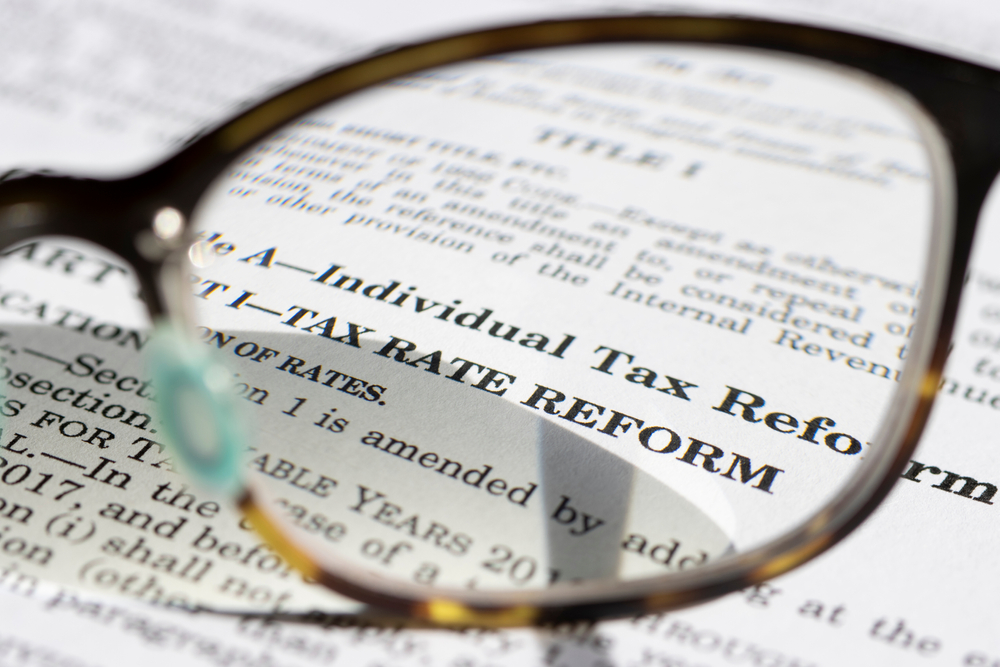Considering a 1031 Exchange? What You Need To Know For Taxes In 2024
Property ownership has historically proven to be a solid strategy for wealth accumulation and financial stability. When managed effectively, it can offer the potential for a dependable income stream with minimal oversight requirements. However, to meet their investment goals, many investors find it necessary to recalibrate their property portfolios periodically.
The prospect of trading an existing property for one that aligns better with an investor's strategic objectives is appealing until you factor in the significant tax liability triggered by the sale. It's worth noting that the tax imposed on sale proceeds can reach up to 42.1% at the Federal level, in addition to any state income tax, if applicable.
However, a well-planned 1031 Exchange can provide a way out of this taxing predicament. This provision allows investors to divest from a property without the burden of capital gains tax or depreciation recapture tax, provided the sale proceeds are funneled back into "like-kind" investment real estate of an equal or higher value and that all IRS tax code stipulations are duly observed.
Seven Potential Benefits of a 1031 Exchange Beyond the Scope of Tax Deferral
While tax deferral is undeniably a prime attraction of a 1031 Exchange, it's not the sole potential benefit enticing property investors. This tax provision may also act as a strategic tool to "level up" your real estate investment portfolio, enabling you to strive to achieve your specific objectives.
This could mean acquiring larger properties, procuring assets in more desirable locations, investing in newer builds, potentially generating higher income, striving to mitigate risks, or attempting to meet any other personal investment milestones. Here are seven distinct ways a 1031 Exchange can be used to seek to elevate the value of your single-property investment portfolio:
1. Transition to a potentially more advantageous property type.
The flexibility of a 1031 Exchange permits investors to diversify their portfolio across an array of property types, even extending to different ownership structures such as fractional ownership of large, income-yielding "institutional" real estate.
This could be a prudent decision if, for instance, an investor with a retail property is facing hurdles due to the surge in e-commerce and may prefer investing in residential buildings in areas with robust population growth. Similarly, a retiree seeking steady income may decide to exchange a multifamily property focused on appreciation for a different property type that yields higher cash flow.
2. Relocate your investment to a more desirable location.
The geographical location of a rental property can profoundly affect its value, cash flow, and potential for appreciation. A 1031 Exchange offers the opportunity to reinvest in properties located in areas offering more favorable conditions, such as states with lower taxes, rapidly growing markets, or more advantageous landlord-tenant laws.
3. Augment the capital re-invested in the next property.
By using a 1031 Exchange, investors can reinvest the entire net proceeds from the sale of their relinquished property into a new one. This tax deferral can be regarded as an interest-free loan from the government, enabling a more substantial investment in the next property, thus potentially leading to increased cash flow and appreciation.
4. Enhance monthly income potential and possible returns.
A 1031 Exchange may serve as a powerful instrument for wealth accumulation, allowing investors to leverage the appreciated value of their property to expand their purchasing power without any tax consequences. With this enhanced buying power, investors are able to target properties with a focus on delivering not only higher but also passive income potential.
Moreover, retaining the full net proceeds from the sale facilitates the acquisition of higher-value properties. The potential to defer capital gains tax across a lifetime of real estate transactions creates a systematic path for personal wealth creation and subsequent transfer to heirs.
5. Strive to diminish the risk on the capital reinvested into real estate.
Given the high entry costs associated with real estate investing, investors often allocate a substantial portion of their net worth to one or two properties, typically within the same locality and of the same property type. Exchanging into a Delaware Statutory Trust (DST) real estate through a 1031 Exchange allows investors to spread their capital across multiple DST properties, thereby diversifying their portfolio across various property types and geographic locations.
6. Lighten tax burdens and complexities for estate beneficiaries.
Employing 1031 Exchanges to defer tax liabilities until an owner's passing can eradicate these deferred taxes for their beneficiaries, thereby amplifying the inherited value for future generations. Upon the owner's passing, the IRS wipes clean capital gains, depreciation recapture, and net investment income tax, a process known as "step-up in basis."
In "community property" states, a surviving spouse is entitled to a full step-up in basis to the fair market value of the properties. This means that the property could be sold immediately after receiving the step-up without incurring any of the aforementioned taxes.
7. Leverage the Power of Passive Investing: Simplifying Property Management with a 1031 Exchange
For seasoned real estate investors seeking to streamline their investment endeavors, the 1031 Exchange offers a golden opportunity. By utilizing this powerful tax strategy, investors can effectively reduce the time and effort spent on property management. Instead, they can seamlessly transition into passive investment options, such as top-tier DST real estate offerings curated by experienced institutional management teams. Experience the benefits of hassle-free ownership while seeking to increase your returns through the 1031 Exchange.
Navigating the Risks: Examining the Downsides of a 1031 Exchange
Before diving into a 1031 Exchange, it's crucial to acknowledge the risks involved in this investment strategy. Real estate, being an illiquid asset class, requires careful evaluation to ensure its suitability for an investor's financial position and objectives. Liquidity emerges as a significant consideration, as investors need to possess sufficient liquid assets to cover unforeseen expenses, such as medical bills. However, there are mitigation strategies available, such as exploring refinancing options or acquiring suitable insurance coverage.
One notable drawback of a 1031 Exchange lies in its inherent complexity. Mishandling the process can result in substantial costs. Hence, it becomes imperative to collaborate with trustworthy 1031 Exchange companies, qualified intermediaries, proficient tax counsel, as well as experienced financial professionals and estate planning attorneys. At Perch Wealth, we prioritize working alongside our clients and their advisors, ensuring a comprehensive understanding of exchange regulations, thorough discussions on associated risks, and flawless execution of the transaction.
Determining the Suitability of a Tax-Deferred 1031 Exchange for Your Needs
The utilization of a 1031 Exchange as a tax strategy has gained significant traction among investors when selling investment properties. IRS data reveals that over the course of ten years, from 2004 to 2013, a staggering $1.3 trillion worth of properties exchanged hands in more than 2.9 million transactions. The popularity of 1031 Exchanges tends to surge during robust economic periods, as property owners seize the opportunity to leverage the appreciating real estate market.
For real estate investors seeking a flexible solution that aligns with their financial and lifestyle objectives, tax-deferred exchanges offer an attractive proposition. Whether the goal is to reduce active management, enhance income, or minimize taxes for beneficiaries, the versatility of a 1031 Exchange can serve as a valuable tool for attempting to achieve successful real estate investments.
At our firm, we prioritize empowering investors with a comprehensive understanding of the benefits and risks associated with 1031 Exchange options, various locations, market conditions, and how these factors can be synergistically combined to achieve their investment goals.
If you are considering selling your investment property and wish to explore 1031 Exchange options further, we encourage you to reach out to us and speak with one of our licensed 1031 Exchange professionals. We offer complimentary consultations that can be conducted over the phone, via video conference, or in person at one of our offices.
General Disclosure
Not an offer to buy, nor a solicitation to sell securities. All investing involves risk of loss of some or all principal invested. Past performance is not indicative of future results. Speak to your finance and/or tax professional prior to investing. Any information provided is for informational purposes only.
Securities offered through Emerson Equity LLC Member: FINRA/SIPC. Only available in states where Emerson Equity LLC is registered. Emerson Equity LLC is not affiliated with any other entities identified in this communication.
1031 Risk Disclosure:
- There’s no guarantee any strategy will be successful or achieve investment objectives;
- All real estate investments have the potential to lose value during the life of the investments;
- The income stream and depreciation schedule for any investment property may affect the property owner’s income bracket and/or tax status. An unfavorable tax ruling may cancel deferral of capital gains and result in immediate tax liabilities;
- All financed real estate investments have potential for foreclosure;
- These 1031 exchanges are offered through private placement offerings and are illiquid securities. There is no secondary market for these investments.
- If a property unexpectedly loses tenants or sustains substantial damage, there is potential for suspension of cash flow distributions;
- Costs associated with the transaction may impact investors’ returns and may outweigh the tax benefits





